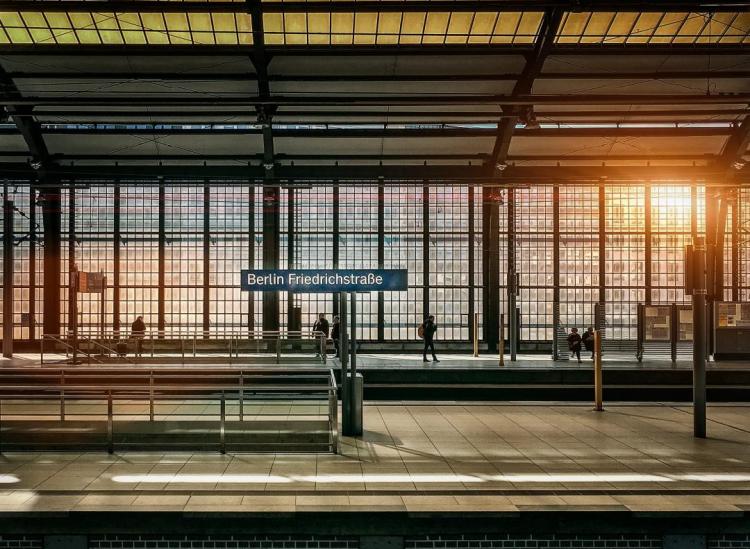Put All Your Worries To Rest About Overnight Trains

Unsplash
We love going to sleep in one place and waking up in a brand new destination. And although planes are a treat, overnight trains have a particular kind glamorous appeal to them. Also called sleeper trains, they’re honestly a travel rite of passage. There’s nothing quite like seeing the sun rise over a new landscape from a train window. Here’s what you need to know before booking a spot on an overnight train.
Why should I sleep on a train?
We love overnight trains for two main reasons. One, you don’t lose any valuable daytime hours in transit. Two, you don’t have to pay for overnight accommodations.
You can make an adventure out of an overnight train as well. Pack a dinner (or a bottle of wine, if allowed) and bring a deck of cards to play with a group or books to read solo. Settle in. Although the motion might not suit all travel types, we love the romance of traveling by train. The rocking as the cars race around curves, the gentle rattling of the wheels against the tracks and the scenery changing as you sleep is pretty magical.
Where will I sleep?
So not all overnight trains are created equal. Think “Titanic.” There are some tickets that come with a private compartment and queen bed. Some have bunk beds with curtains separating the bunks. Some have fold-out leg rests. And some tickets are just a seat on a train that happens to run through the night. The more you pay, the more you get.
In Europe, first-class tickets are more likely to offer a bed of some sort, while second- and third-class tickets will be less comfy. But hey, they’re cheap. In Southeast Asia, most sleeper trains have a bunk, but first class is more likely to have air conditioning, more space and privacy. Just weigh your priorities. We’ve taken both types of trains for different situations. No judgment. Everyone needs different levels of comfort to catch some Z’s.
Is it safe?
Sleeper trains are totally safe. Sure, just like any type of travel, there are areas where it’s not the norm (or could be a little rickety), but overall, overnight trains are a breezy blast. Travelers in groups or pairs should feel completely at ease sleeping on trains. First-class travelers can close doors to their compartment or rest easy with power in numbers.
Solo travelers, you can take a couple precautions for dozing on trains. The most important: Always know where your passport, wallet and train ticket is. If you want, you can even cuddle your purse like it’s your favorite childhood teddy bear. It’s a paranoid yet surprisingly cozy way to keep your necessities safe.
If you’re sharing a compartment with strangers, try introducing yourself when you all find your seats. It will feel better to try to sleep if you know who’s around you. And you might even find some new travel friends in the process. Plus, there’s nothing that will bond a group of strangers more quickly than trying to sleep in close quarters.
Trust your gut. If you’re ever uncomfortable in a compartment, leave. (And we mean uncomfortable for creepy reasons, not a lack of feather pillows.) There’s usually some sort of public space on a long-distance train where you can find other people or a conductor. Look for a dining car, snack station or even pop into another compartment.
Some extra snoozing tips:
If you’re a sound sleeper…
If you doze off at the first creak of a train wheel, set an alarm for a half an hour before the train is scheduled to arrive at your stop. It’s rare that a train will get to a destination early (if anything, you’ll be late), so 30 minutes should give you plenty of time to wake up and be ready to depart.
If you’re a light sleeper…
Earplugs are your best friends, light sleepers. Unfortunately, you can’t control any of the circumstances around you on a train. Even if you have a private cabin, the wheels might squeak. So we’d recommend traveling with earplugs or noise-canceling headphones and downloading some soothing music or white noise before your trip.
Keep an eye on your baggage…
We know it’s impossible to watch your suitcase while sleeping. But if possible, store it within your sightline if you were awake. Even better, put it under or over your seat. People are much more likely to mess with bags that are far out of your reach. Add a lock for an extra layer of precaution.











